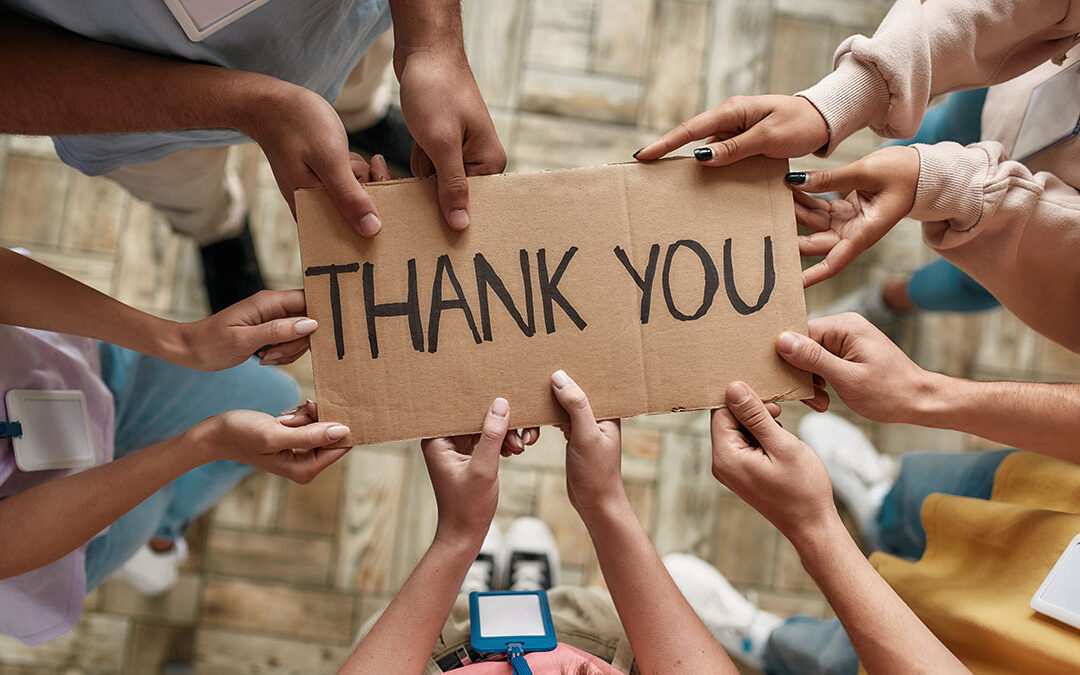Successful fundraising doesn’t end with securing donations. In fact, that’s just the beginning to cultivate lasting relationships with your donors to ensure their continued support. Building a well-thought-out fundraising stewardship plan is your roadmap to showing appreciation, transparency and accountability to your donors. The most meaningful stewardship opportunities are the ones that we build into our lives every day. From meeting the staff that deliver the programs and touring the facilities to handwritten notes and short thank you videos, all these personal touches allow the donor to experience the impact of their philanthropic investment first-hand. The process of creating an effective fundraising stewardship plan will strengthen your organization’s donor relationships, help you achieve your fundraising goals and hold you and your organization accountable.
Define Your Goals and Objectives
Get clear about your goals and objectives, know what your team hopes to achieve through stewardship. Prioritize if you are looking to retain existing donors, increase donor lifetime value, or improve donor satisfaction. Keep in mind the goals and objectives of your donors when they make their gift. With clear objectives, you can tailor your stewardship activities accordingly.
Know Your Donors
Effective stewardship begins with knowing your donors inside and out. Segment your donor database based on factors such as giving history and communication preferences. This allows you to personalize your stewardship efforts, ensuring that each donor receives the attention and recognition they deserve.
Develop a Stewardship Calendar
Outline your various donor touchpoints and activities throughout the year. This calendar should include thank-you communications, progress updates on funded projects, donor recognition events (when appropriate) and other meaningful interactions such as a “tea and tour” of your organization. A well-planned calendar will help you stay organized and ensure that no donor is overlooked.
Craft Personalized Thank-You Messages
Thank-you messages are paramount to your stewardship plan, and worthy of stick-it note reminders every day! Expressing your gratitude sincerely and personally goes a long way in sincerely cultivating your donor relationships. Depending on preferences, phone calls and hand-written notes top the personal touches to your appreciation efforts. Ensure thank-you letters and emails are tailored to each donor, mentioning their specific contribution and the impact it has had on your organization and the people who benefit from your programs and projects.
Share Impactful Stories
Donors want to know that their contributions are making a difference. Regularly share stories, testimonials and updates that demonstrate the real-world impact of their support. Use visuals, such as photos and videos, to make these stories come to life and create a deeper emotional connection. These can be simple updates from your team shared with your donors through their preferred communication method, and like the step above, add the personal touch that builds relationships.
Provide Donor Recognition Opportunities
Recognition is a powerful motivator for donors. Consider naming opportunities, honour rolls or donor plaques for major contributors. Publicly acknowledging your donors’ generosity in your annual reports, newsletters and on your website makes them feel like valued partners in your mission. If you do not already have a donor benefit matrix, now is the time to prepare one – The Dennis Group Inc. can provide guidance in developing this important tool.
Seek Feedback and Input
Engage donors in the decision-making process. Seek their feedback on your organization’s initiatives and communications, and ask for their input on future projects. When donors feel that their opinions are valued, they are more likely to stay engaged and continue supporting your cause.
Evaluate and Adjust
Regularly assess the effectiveness of your stewardship plan. Monitor donor retention rates, feedback and engagement levels. Use this data to refine your plan and make necessary adjustments to better meet your donors’ needs and expectations.
Train Your Team
Stewardship is a team effort. Ensure that your staff and volunteers are well-trained and understand the importance of donor stewardship. Everyone who interacts with donors should be well-versed in your stewardship plan and its implementation.
Donor-Centric Culture
Finally, instill a donor-centric culture within your organization. Make donor stewardship a priority at every level, from the board of directors to frontline staff. When everyone is aligned with the importance of stewardship, it becomes a natural part of your organization’s day-to-day.
With a well-executed fundraising stewardship plan, you’re well set-up for building and maintaining strong donor relationships. It’s not just about saying thank you; it’s about showing your donors that they are valued partners in your mission. Remember, stewardship is a journey, not a destination, so invest the time and effort needed to nurture your donor relationships for the long term.
The Dennis Group Inc. can help your organization create strategies to achieve success in all areas of non-profit management, including research, campaign and fund development expertise, organizational development and planning, communications and stewardship. Contact us to learn more.

Recent Comments